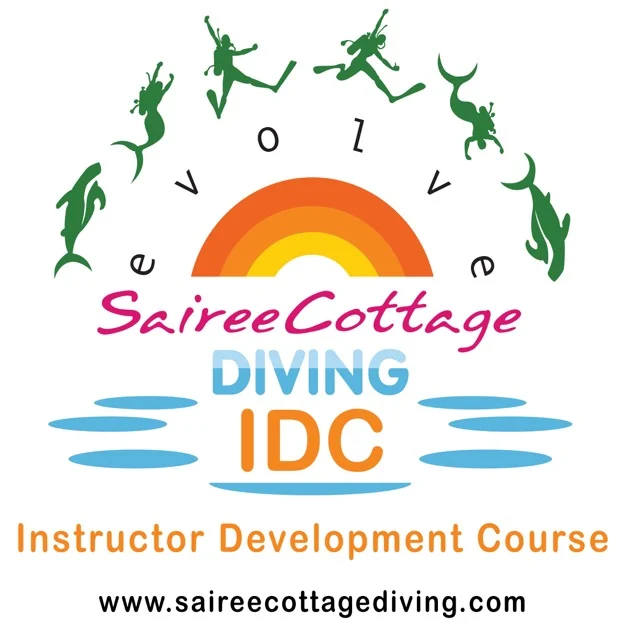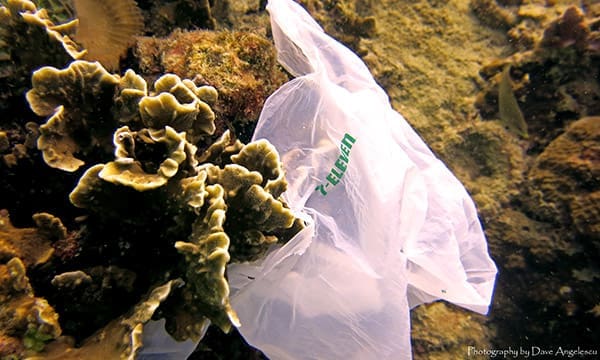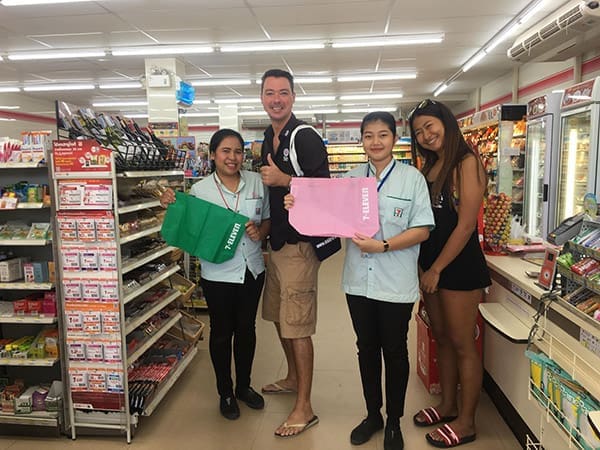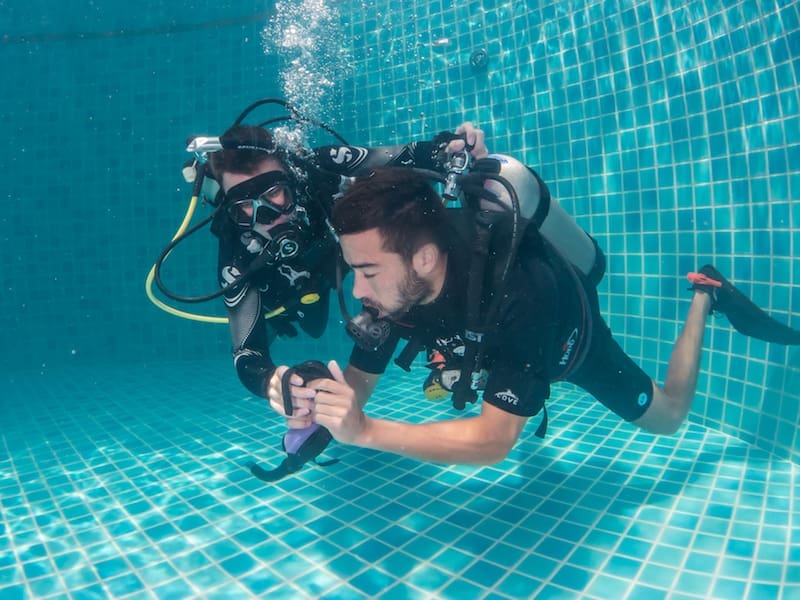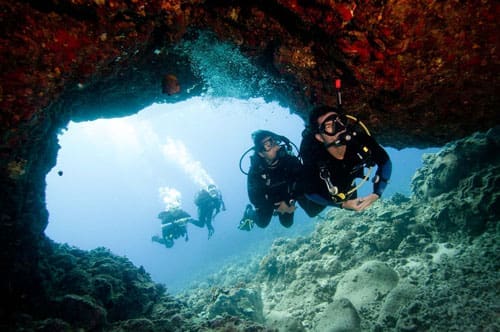The New Revised PADI IDC Course has been long-anticipated by many PADI Members and Course Directors. PADI listened very well to their members and The New Revised PADI IDC Course now brings major updates and changes that will make an already successful IDC course even better!!
So why did we have to change to the New Revised PADI IDC Course? Well the most important reason is that we are now living in a digital age where most people have access to the internet and are using devices like smartphones or tablets. Even in most
remote places, people have a network connection these days. This gives an incredible opportunity to finally move away from the hard copy paper manuals and go digital.
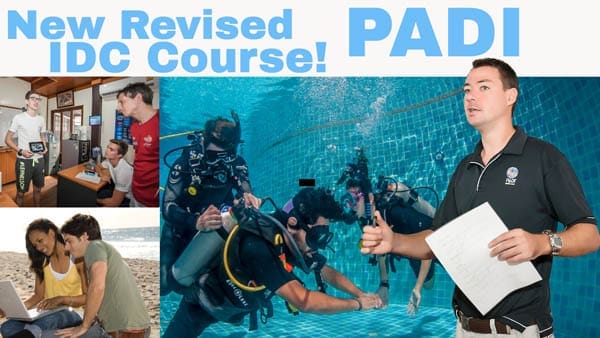
If you join the New Revised PADI IDC Course you will now have access to the PADI IDC Digital Crewpack with PADI’s eLearning. This make learning easier, very eco-friendly, all devices supported, you can now start preparing for your IDC instantly when you sign up, and of course as a PADI Platinum Course Director my all time favourite; I can now track my students and help them even before they arrive!
On top of the major change to make the IDC Crewpack Digital, PADI also changed the way we conduct live presentations and a few changes of the in-water sections of the New Revised PADI IDC Course – In this article you will read the major changes and differences in the New Revised PADI IDC Course. We will discuss:
- Updated Skill Circuit
- New IDC Lesson Guides
- eLearning vs Live Presentations
- More Real Life Workshops
- Swims are updated
- More Rescue Scenario Practice
- IDC Training Video’s have been added
- Updated PADI Course Director Manual and Guide To Teaching
- Updated Classroom, Confined and Open Water Presentations
- New IDC Digital Crewpack with eLearning!!
New updated Skill Circuit during the New Revised PADI IDC Course
The PADI Skill Circuit in New Revised PADI IDC Course has finally been updated. The last revision of the PADI IDC Course was in 2010. This meant that the Skill Circuit skills in the IDC were reflecting the PADI Open Water Diver Course skills in 2010.
However in 2013 PADI revised their Open Water Diver Course and added a few new skills. This change was amazing and greatly improved the quality and safety of the already successful Open Water Diver Course, but these new diving skills where not added or changed in the PADI Divemaster or IDC Skill circuit. Therefore many people are now pleased to see that in the New Revised PADI IDC Course the skill circuit has been updated to reflect the current PADI Open Water Diver Course skills.
Also as an addition, to get a 5.0 (highest score) some of the New Revised Skill Circuit skills need to be demonstrated in a neutral buoyancy position to emphasize protecting the reef. You can still choose to kneel on the floor, but then your score will be a bit lower.
Here are the skills for the New Revised PADI IDC Course Skill Circuit:
- Equipment assembly, adjustment, preparation, donning
and disassembly - Pre-dive safety check (BWRAF)
- Deep-water entry
- Buoyancy check at surface
- Snorkel-regulator/regulator-snorkel exchange
- Five-point descent, using buoyancy control to stop descent
without contacting the bottom - Regulator recovery and clearing*
- Mask removal, replacement and clearing*
- Air depletion exercise and alternate air source use (stationary)
- Alternate air source-assisted ascent
- Free flowing regulator breathing
- Neutral buoyancy, rise and fall – using low pressure inflation
- Five-point ascent
- Controlled Emergency Swimming Ascent
- Orally inflate BCD to hover for at least 60 seconds
- Underwater swim without a mask
- Remove and replace weight system underwater
- Remove and replace scuba unit underwater
- Remove and replace scuba unit on the surface
- Remove and replace weight system on the surface
- Surface dive while skin diving and clear snorkel using blast
method upon surfacing - Disconnect low pressure inflator
- Re-secure a loose cylinder band
- Perform an emergency weight drop
* To earn a 5, diver must demonstrate skill while neutrally buoyant.
Evaluation Scoring Criteria:
1 – participant unable to perform exercise
2 – exercise performed with significant difficulty or error
3 – exercise performed correctly, though too quickly to adequately exhibit (or illustrate) details of skill
4 – exercise performed correctly and slowly enough to adequately exhibit (or illustrate) details of skill
5 – exercise performed correctly, slowly and with exaggerated movement (appeared “easy”)
Are you looking to improve your PADI Skill Circuit Demonstration Skills during the Divemaster or IDC Course or are you looking for some extra teachings tools then SUBSCRIBE to our IDC Training YouTube Channel today!
New Lesson Guides – Revised PADI IDC Course
One of the most amazing updates is the eLearning Section of the PADI Digital Crewpack. The eLearning IDC Presentations can replace most of the old live IDC Presentations to save more time.
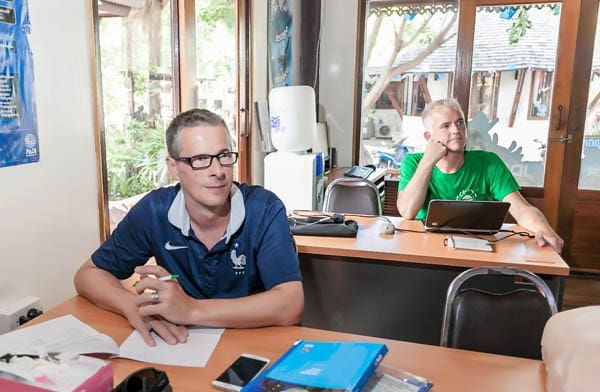
However many people still like to listen to a PADI Course Director and/or many Course Directors like to still teach some IDC presentations live. For this reason PADI made sure that you can still teach all IDC Presentations live in the classroom. What is great about this New Revised PADI IDC Course is that PADI changed and updated the IDC Lesson Guides to reflect the current day and to give it a much more cleaner look.
The new PADI IDC Lesson Guide Topics are:
- Orientation
- Dive Theory Workshop
- Learning Teaching Workshop
- Confined Water Training Workshop
- Open Water Training Workshop
- KD Presentations Workshop
- PADI System Workshop
- RiskManagement Licensing Workshop
- DSD Workshop
- OWD SetUp Scheduling Workshop
- Continuing Education Workshop
- Sales Techniques Workshop
- Course Close
eLearning vs Live Presentations – What is best during the New Revised PADI IDC Course?
This is a hard question to answer. I think it really depends on many factors like, the PADI Course Director, the students, available time, the dive centre, the location , facilities and many more factors.
I am a bit spoiled as I teach the PADI IDC Course at Sairee Cottage Diving on Koh Tao, where I have access to incredible training facilities only meters away from my classroom. This give me the option to use either choice in the New Revised PADI IDC Course.

Some presentations I now shift a bit to eLearning to free more time to present my real-life dive instructor workshops on land and in-water. But I still believe that some IDC Presentations/lectures should be conducted live by a PADI Course Director, especially presentations like Risk Management and Standards. I personally love that students can use eLearning to prepare extremely well before we start the IDC or the Presentation, and then I can complete it with my personal experiences in that field in a live IDC presentation.
I believe that PADI truly hit the Jackpot with this – to be able to use multiple options eLearning and Live Presentations gives us Course Directors unprecedented flexibility to teach our IDC courses in a way that is best for our IDC Candidates.
More Workshops! – Revised PADI IDC Course
One of biggest piece of feedback that IDC Candidates and Course Directors gave to PADI is that most of us felt there was not enough time and focus on “real-life” teachings in the old 2010 IDC Course. PADI has now changed that and in the New Revised PADI IDC Course you will do lot’s of on-land and in-water workshops to emphasize real-life teaching.
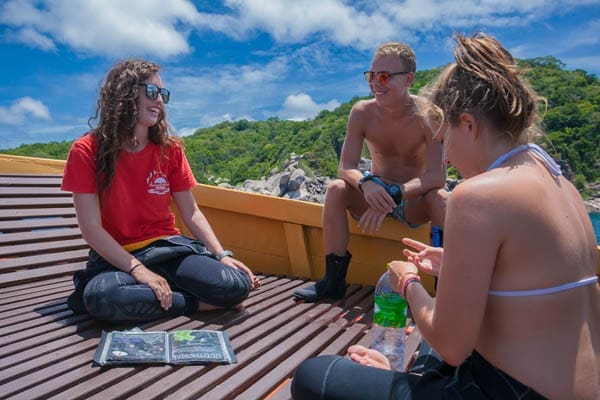
Here are some of the New Revised PADI IDC Course workshops:
- Learning and Teaching workshop
- PADI Systems workshop
- Dive Theory workshop
- DSD workshop
- Open Water Diver Course workshop
- Advanced Diver Course workshop
- Continuous Education workshop
- etc.
Every workshop in the New Revised PADI IDC Course is a bit different, but they all emphasize on IDC candidates working together in a team and learning how to teach each other like real diving instructors. The workshops in the New Revised PADI IDC Course are amazing!
Confined & Open Water skill presentation – Dry workshops
These great workshops are where IDC Candidates now practice their water presentations first on land. This is not only very effective in their learning process, but it leads to much better results on their in-water presentations and it causes some very funny scenes. Don’t forget the IDC Course should also be fun!
Swims are improved in the Revised PADI IDC Course
Before in the old 2010 IDC Course a IDC Candidate had to perform an 800 meter swim with mask, fins and snorkel. That has now changed in the New Revised IDC Course to perform a 400 metre/yard continuous swim, without swimming aids and using any stroke or combination of strokes. On top of that you now also need to tread water for at least 10 minutes, the same as in the PADI Open Water Diver Course.
More emphasis on practicing Rescue Scenarios during the New Revised PADI IDC Course
Already in the old 2010 IDC Course you had to conduct a Rescue Diver Course workshop, but in the New Revised IDC Course PADI added Rescue Diver scenario’s. Here are the performance requirements for the Rescue Scenarios:
By the end of Part 1 of this workshop, at and in an open water site, the candidate should be able to:
- Demonstrate the organization, sequence and conduct of Rescue Diver course:
- Exercise 2 – Panicked Diver
- Exercise 6 – Surfacing the Unresponsive Diver
- Exercise 7 – Unresponsive Diver at the Surface

Brief and debrief one or more skills or tasks from Exercises 2, 6 and 7.
Demonstrate techniques that may be used to meet the performance requirements for Exercises 2, 6 and 7.
By the end of Part 2 of this workshop, the candidate should be able to:
- Perform a demonstration-quality rescue of a simulated panicked diver at the surface, in water too deep in which to stand, in either confined or open water.
- Perform a demonstration-quality rescue of a simulated non-breathing, unresponsive diver at the surface in open water that is too deep in which to stand.
- Participate as a rescuer, simulated victim, secondary rescuer or equipment handler in an open water scenario that includes:
– Bringing a simulated non-breathing, unresponsive diver from the bottom to the surface (from not deeper than 9 metres/30 feet).
– Providing aid at the surface while towing a non-breathing diver to an exit.
– Removing a non-breathing diver from the water. - Administering oxygen to a non-breathing diver while using a rescue breathing mask.
Of course you can still add more rescue skills in the workshop. I believe it is very important to spend some time in the IDC to teach a fantastic Rescue Diver workshop as, in the unlikely event of an incident, this can be life-saving down the road.
Knowledge Development Presentations in the New Revised IDC Course
The Knowledge Development Presentations are still quite similar, but PADI simplified and streamlined some parts like the Lesson Plan form which is now much easier for IDC Candidates to work with.

PADI now also recommends IDC Candidates use Digital teaching / learning tools and training aids in their IDC Knowledge Development Presentations. Personally I think this is awesome as we teach more and more digital tools in this present day.
Not only is the Lesson Plan form easier to use for Candidates, PADI also streamlined and cleanup the Knowledge Development Evaluation scoring paper for the Course Directors. It is now so much easier to use and quickly give the right scores.
Updated PADI’s Guide to Teaching
The Guide to Teaching 2019 has been updated and streamlined. It is now so much more easy to use and navigate than before, not only for IDC Candidates, but also for certified Diving Instructors. This will save a lot of time on the PADI IE during the Standards Exam and it will make this incredible tool much more accessible and user-friendly for working PADI Diving Instructors. You can now access the PADI’s Guide to Teaching through the New Digital IDC Crewpack or Download it in PDF form to make it even more easy to access even if you are offline.
PADI’s IDC Training Videos in the New Revised IDC Course
In the New Revised PADI IDC Course, PADI now introduces IDC Training videos that PADI Course Directors can access in their Digital Instructor Development Materials Crewpack.
There are many different IDC training videos that cover topics like:
- Online Processing Center Tutorial – Explaining how to certify PADI students online
- How to Prepare a Teaching Presentation – Great video to show IDC candidates how to conduct IDC Knowledge Development Presentations
- Evaluation Training Videos – Great tool for PADI Course Directors on how to evaluate IDC Candidates on their Knowledge Development, Confined and Open Water Presentations.
But most importantly, PADI Course Directors have now access to IDC eLearning Videos that they can show to the IDC Candidates to explain in detail how to organize and conduct their IDC Classroom, Confined and Open Water Presentations! This is an amazing training tool!
Beside the awesome new training videos from PADI there is also a great YouTube Channel IDC Koh Tao Thailand with great IDC training videos. Check out for example this video about different problems & solutions during IDC Skills:
PADI Digital Crewpack with eLearning – New Revised IDC Course
The main change in the New Revised IDC Course is the introduction of the PADI Digital Crewpacks with access to PADI’s Online eLearning. In this age almost everyone has access to a computer, tablet or smartphone. Not only is it much easier to study for the IDC but it also significantly reduces paper and plastic waste that the previous IDC Crewpack produced.
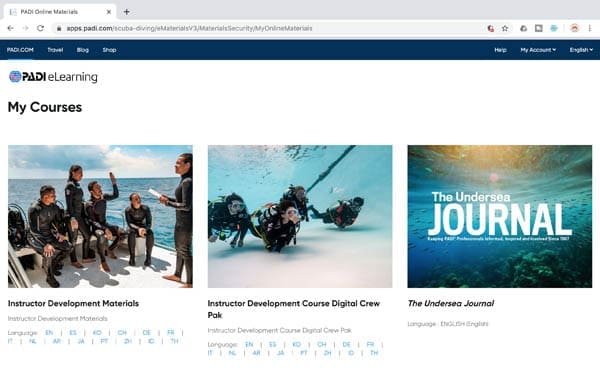
There are now 2 Digital Crewpacks to choose from:
– PADI IDC Staff and Course Director Instructor Development Materials
– PADI Instructor Development Course Digital Crew Pack
The Instructor Development Materials contains a large amount of training aids for PADI IDC Staff Instructors and PADI Course Directors:
- Instructor Development Materials Reference Guide
- Updated Course Director Manual
- IDC Lesson Guides
- Instructor Development Resources IDC eLearning Videos
- Evaluation Training Videos
- Additional Videos
- Online Processing Center Tutorial
- IDC Staff Instructor Course Lesson Guides
The PADI Instructor Development Course Digital Crewpack is the updated crew pack for IDC Candidates and it contains:
- IDC eLearning Presentations (Covering most important IDC Lessons)
- Diving Knowledge Workbook eLearning – Amazing tool to prepare for the IDC Dive Theory Exams!
- PADI’s Guide to Teaching
- IDC Resources – Digital versions of some slates and forms
- Open Water Diver Course Prescriptive Lesson Guides – Fantastic training aid to teach PADI Open Water Diver courses
- Exams – For all courses that can be taught as a PADI OWSI
- Specialty Instructor Guides – That can be taught as OWSI
- Online Processing Center Tutorial
Traveling and Preparing with the new PADI Digital Crewpack and eLearning
Can you please send me the PADI IDC materials and crew pack? This is one of the main questions I get from IDC Candidates when they book their IDC course with me at Sairee Cottage Diving. Many people would love to start studying and preparing for their IDCs as soon as possible.

This was hard to do with the old 2010 IDC Course as the materials and crewpack were very heavy and not easy to send by mail. Now these days are finally over and with PADI’s Digital IDC Crewpack you can now instantly grant access to your future IDC Candidates so they can prepare for the PADI IDC Course. This makes their and the PADI Course Director’s life so much easier! I can already picture them reading their IDC eLearning with a cup of coffee waiting for their airplane to take them to their location. Awesome!
On top of this the PADI Course Director can now check their IDC Candidates progress remotely by a new progress monitoring facility. Reminding candidates about important parts and even helping them before the start of the New Revised PADI IDC Course.
The New Revised IDC Course becomes more Eco-Friendly
The old IDC Crewpack from 2010 contained quite a lot of materials that where amazing to use, but not always that eco friendly when they ended up in the garbage. PADI has always been on the front lines of conservation and they are even part of one of the biggest and most successful Eco Conservation organizations called Project AWARE. Therefore it was very important to PADI to make the New Revised IDC Course as Eco-Friendly as possible!
A few major changes are there to make the New Revised IDC Course more friendly:
The first is the introduction of emphasizing more on conservation during the IDC Presentations.
Second to show environmental awareness at all times underwater, not just Open Water but also Confined Water.
Third is that you can now access Project AWARE IDC Materials and Lesson Guides to add/integrate into your New Revised IDC Program This is a major addition to the Course and in the end most conservation is all about inspiring others, and in this case future PADI Diving Instructors! Fourth is having almost all IDC materials gone digital which not only reduces the use of paper, but also more importantly, reduces Plastic waste.
The IDC Digital Crew pack can be updated instantly and all the time
Normally the PADI Instructor Manual gets updated once a year, with fresh updates and changes being updated every quarter in the PADI Undersea Journal Magazine. Some manuals like the Guide to Teaching or the PADI Course Director manual stayed the same with minor updates in the Undersea Journal.

This has worked fine, but now we are taking updates to another level. Because the PADI IDC Crewpack in the New Revised IDC Course is fully digital and accessible through PADI’s IDC eLearning, they can now make small adjustments, change standards and update any materials instantly when it is needed and relevant. This is an incredible new feature that greatly improves the quality of the IDC program.
Final Word
PADI truly listened to the suggestions and comments of their members while making these changes happen for the New Revised PADI IDC Course. This incredible product is ready for the future and I am so excited to start teaching this.
We at Sairee Cottage Diving will start teaching this New Revised PADI IDC Course from Today and if you are also thinking about becoming a PADI Diving Instructor then please contact us for more information about our Revised PADI IDC Course.
Please also let us know what you think about the New PADI IDC Course in the comments below and please share this article to anyone who has questions about the changes in the New Revised PADI IDC Course.

Marcel van den Berg
PADI Platinum Course Director
Sairee Cottage Diving
Koh Tao, Thailand
